An island made out of shells
Fadiouth — this tiny, shell-covered island in Senegal’s Sine-Saloum Delta — is unlike anywhere I’ve been. The journey to reach it was just the beginning of what felt like stepping into another world, where history, culture, and nature blend seamlessly into everyday life.

I had to drive around an hour from the hotel together with our friendly local driver. He told us about his village - which we past - and many other stuff from alongside the road.
Hey Hive Family
Enjoy an island made out of shells
and let us travel the world again
Start the visit
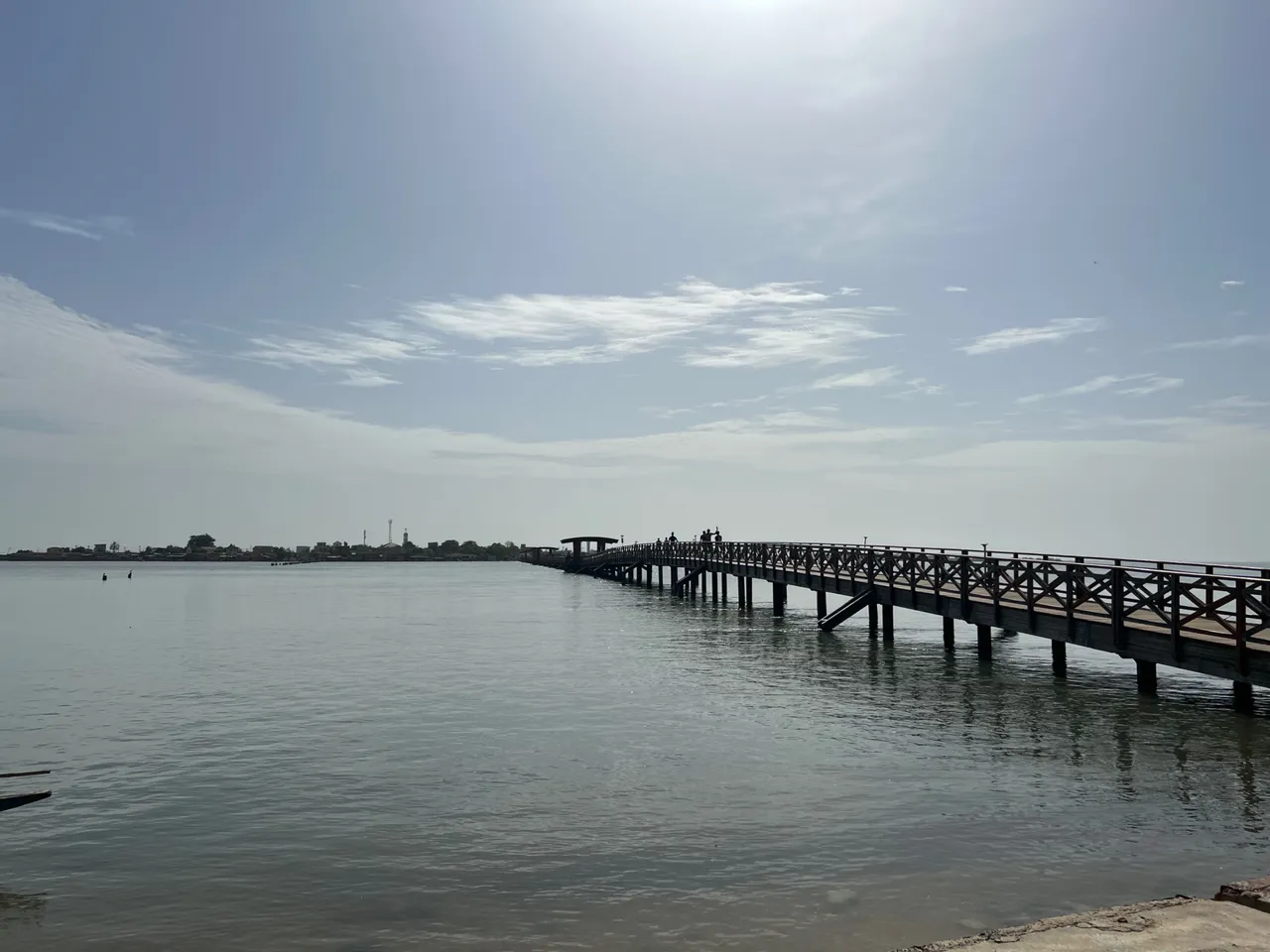
To get there, we started with a walk across the famous wooden bridge — and what a walk it was. Spanning 400 meters (about 1,300 feet), this bridge, built in 2006, stretches from the mainland town of Joal to the island of Fadiouth. Crossing it, you can’t help but feel the gentle sway beneath your feet, the wooden planks creaking softly, adding to the sense of adventure. Below, the water glimmers in the sunlight, with mangroves spreading out in all directions, creating a peaceful, dreamlike landscape.
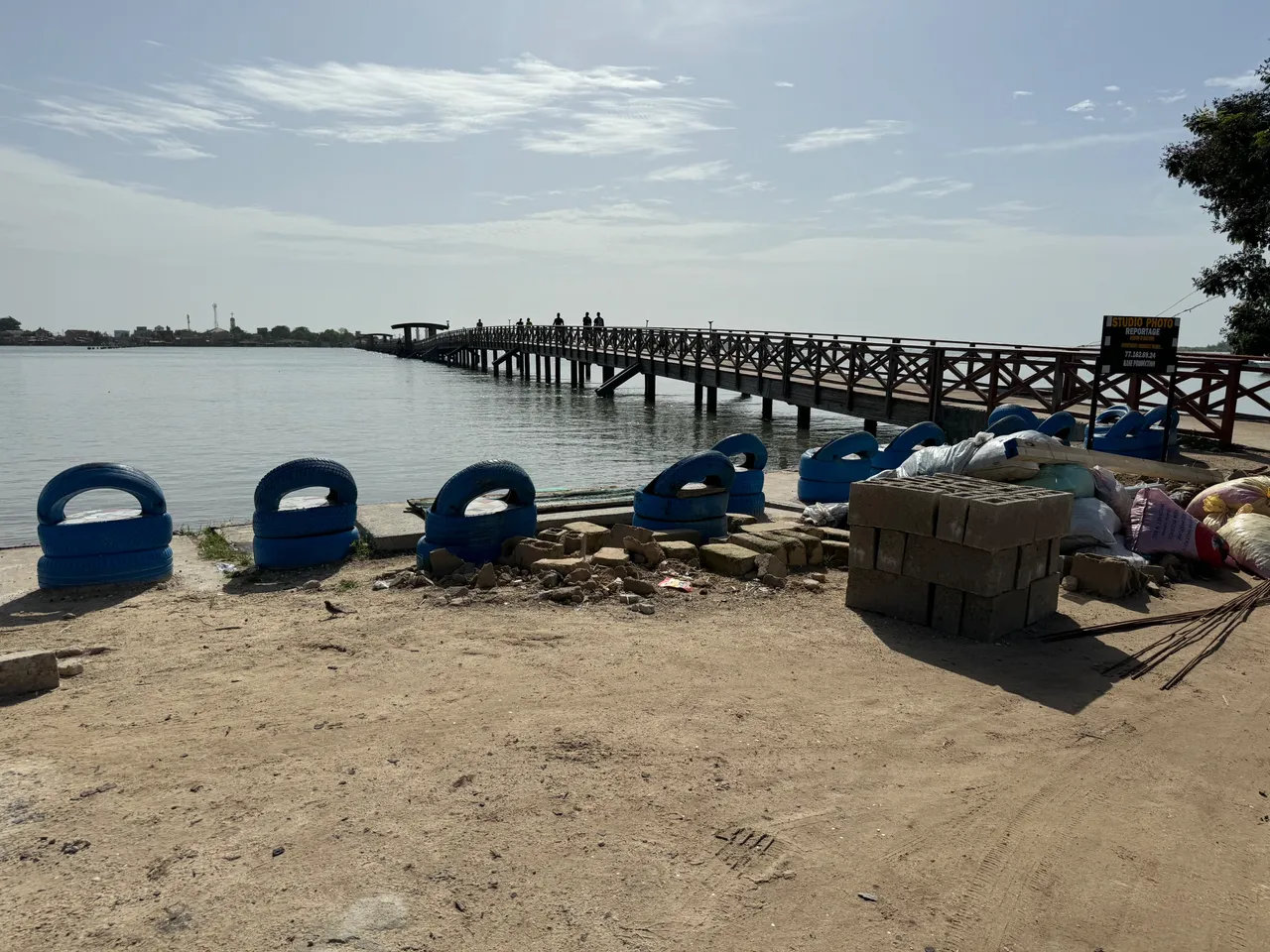
As I walked along, I took in the stunning views on either side. The delta’s shallow waters are dotted with fishing boats and lush mangrove forests that seem to float on the surface. The air was warm, even hot but a gentle breeze swept across the bridge, making the journey feel refreshing. Step by step, Fadiouth grew larger in the distance, and with it, my curiosity about this unique island built on the shells of mollusks—something I had only heard about until now.
A Shell Island Built Over Centuries
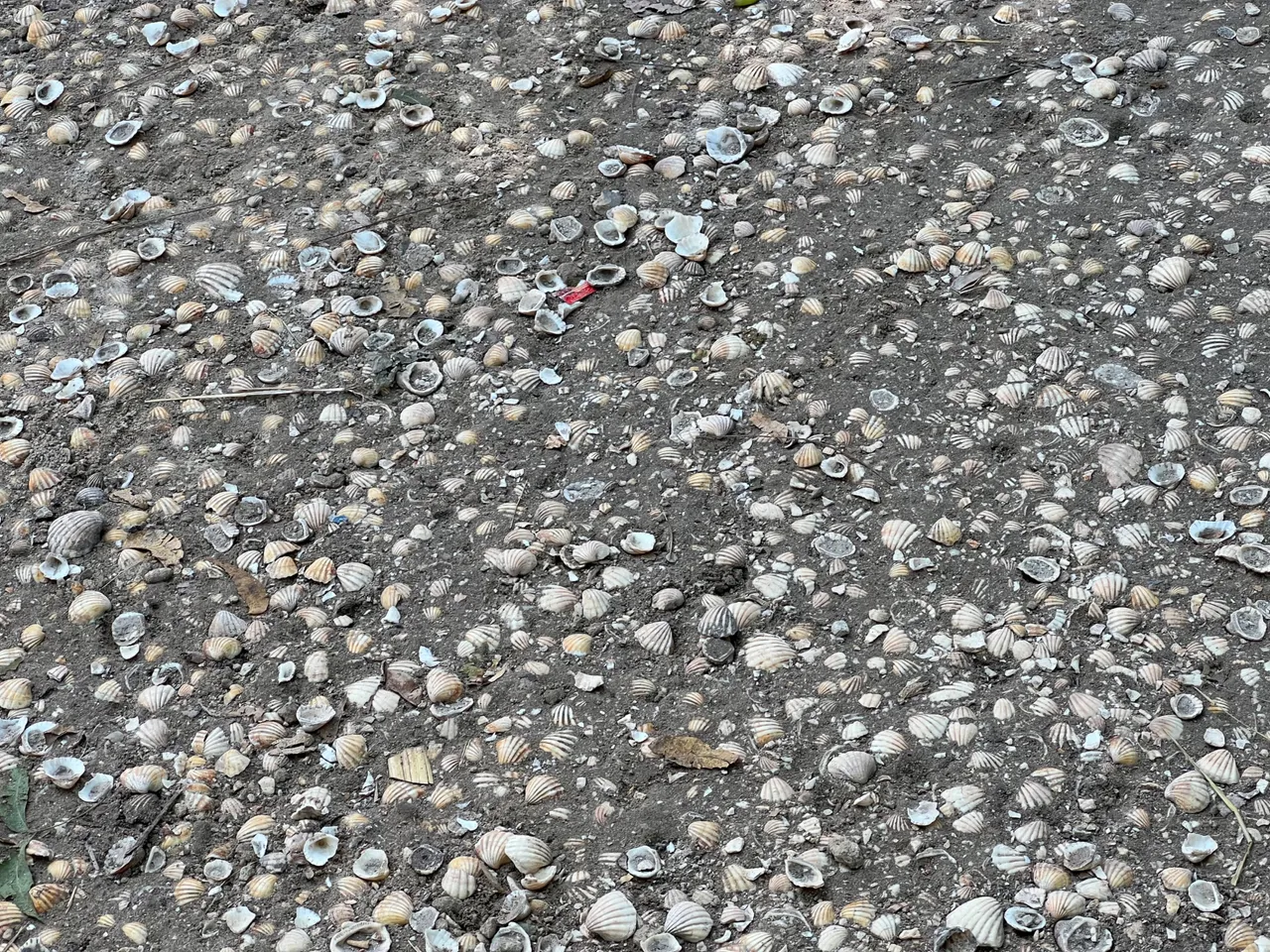
When I finally reached the end of the bridge and set foot on Fadiouth, I couldn’t believe what I was walking on. The ground beneath me was made of seashells—millions upon millions of them, crunching softly with each step. It was surreal, like stepping onto a giant, natural mosaic. This island, where nearly every surface is covered in shells, was built over centuries by the hands of its people. As the local fishermen harvested mollusks from the sea, they discarded the empty shells, piling them up year after year. Over time, these shells became the foundation of the island itself, rising up from the sea like a living monument to the resourcefulness and patience of its inhabitants.
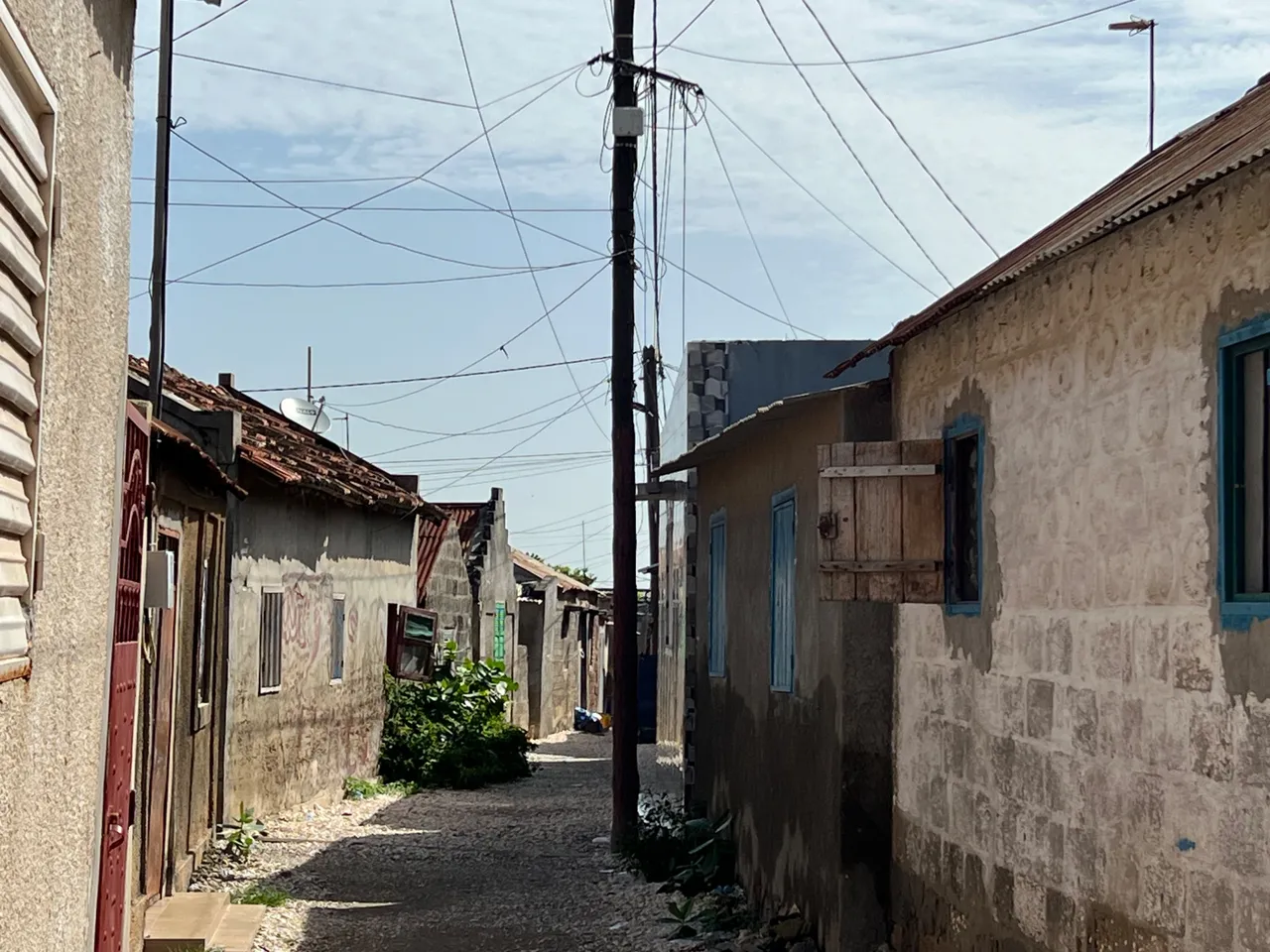
The shells aren’t just underfoot—they’re everywhere. Walkways, walls, courtyards, and even the landscape itself are covered in these pearly white, pink, and gray shells. The sun catches them in the light, making the island shimmer as you walk through it. It’s an extraordinary sight, and as you crunch along, you can almost feel the layers of history beneath you. This is an island that has been shaped not by sand or stone, but by the sea and the people who live here. The shells, once discarded as waste, have become the very ground they stand on. It’s a story of adaptation and resilience, and it’s something I’d never seen before.
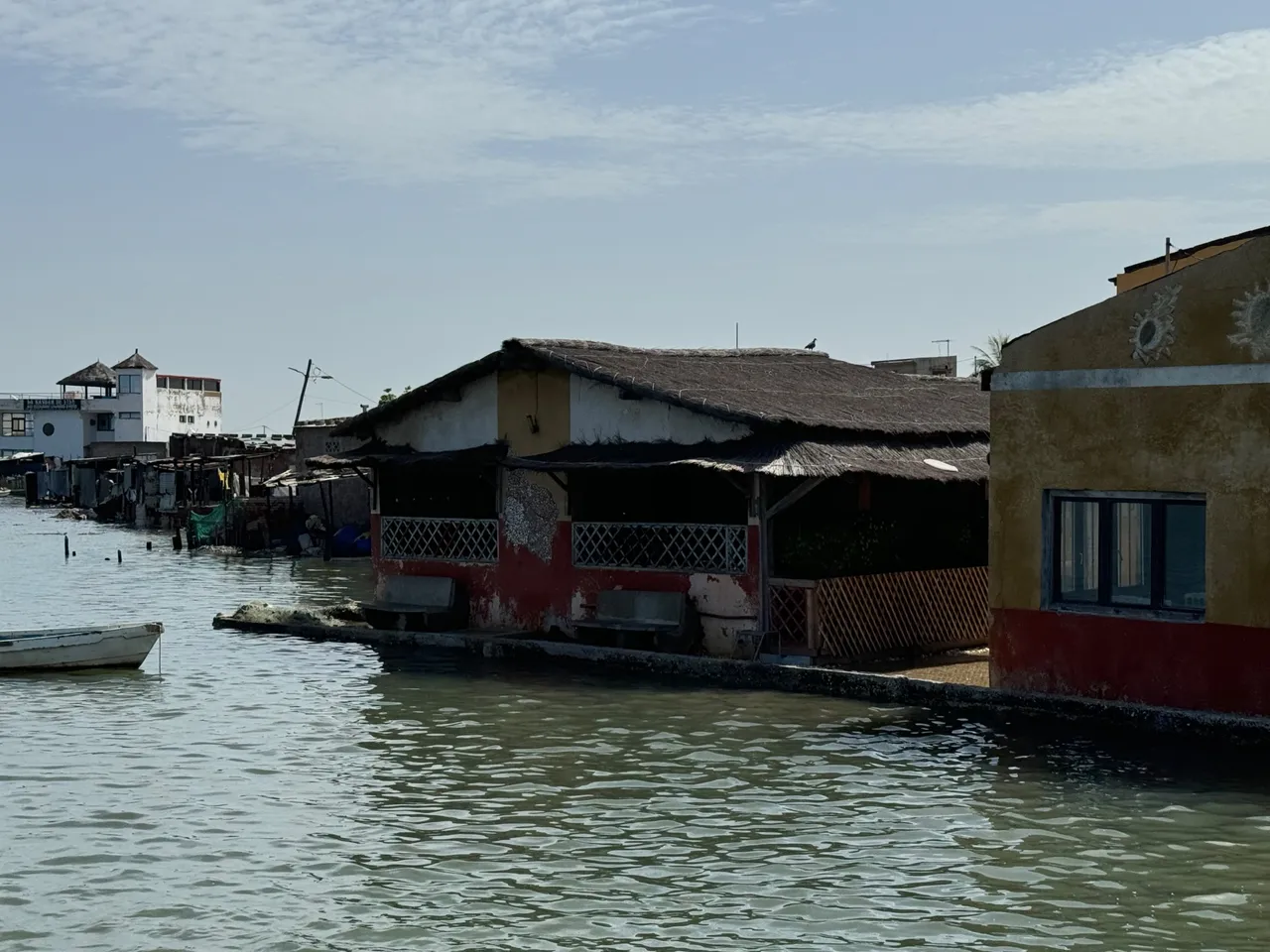
A Village Where Catholics and Muslims Live Together in Harmony
But Fadiouth’s uniqueness doesn’t stop at its shell foundation. What struck me most as I wandered through the village was the remarkable sense of harmony that exists here between different faiths. Around 9,000 people call this island home, and the majority of them are Catholic, yet they live peacefully alongside their Muslim neighbors. It’s a place where the boundaries of religion seem to dissolve, and the result is a community united by respect and mutual understanding.
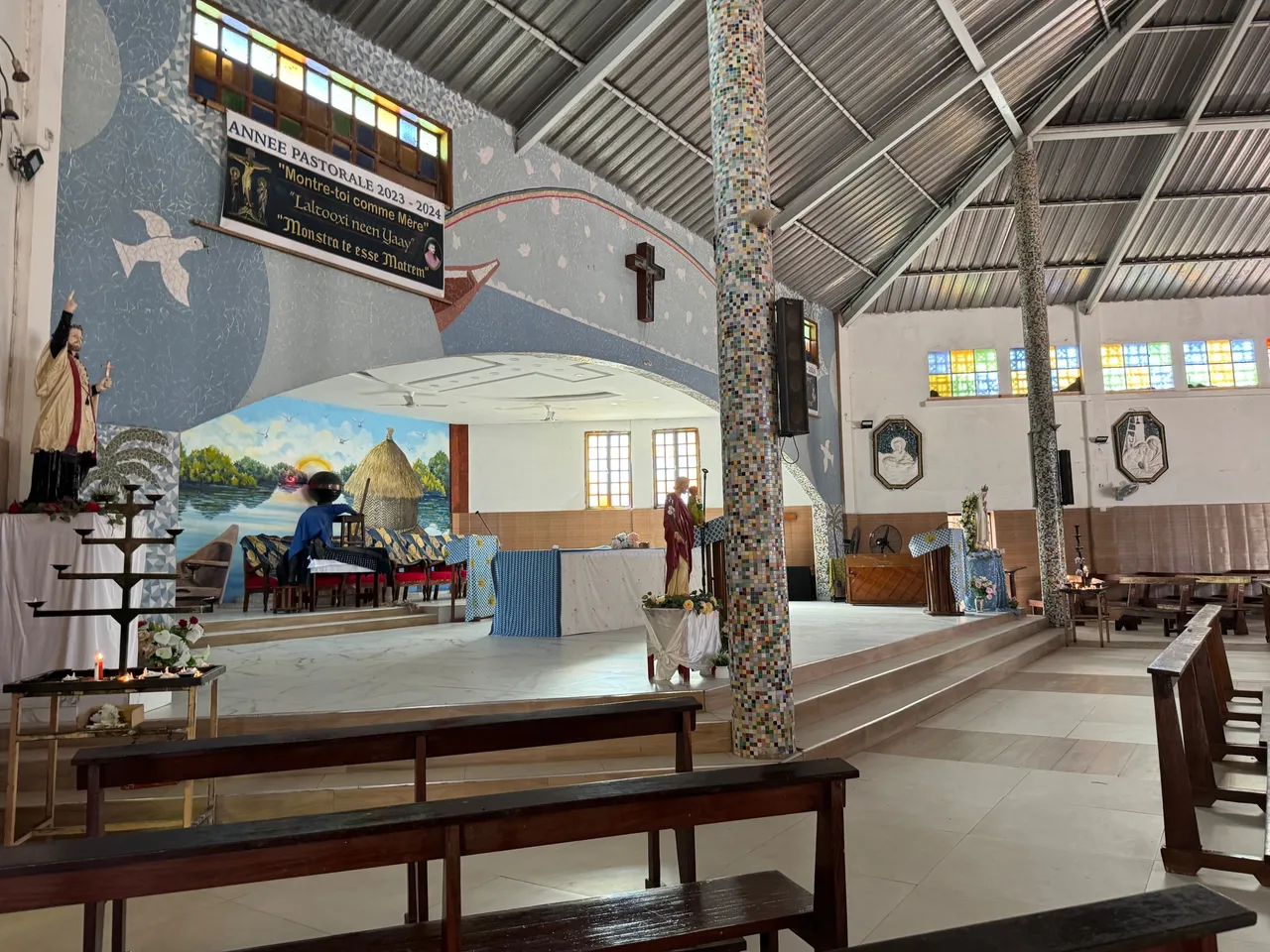
The Catholic church stands proudly at the heart of the village, its spire rising above the shell-covered streets, and just a short walk away, there’s a beautiful mosque. It’s not unusual to see villagers attending mass in the church one day and joining their Muslim friends for prayers the next. There’s a shared sense of community here that goes beyond religion, something you feel in the air as you walk through the streets. The real testament to this harmony is the village’s cemetery, located on a small, shell-covered islet just off the main island. Both Catholics and Muslims are buried here side by side, their graves covered in the same shells that define the island itself. It’s a powerful symbol of coexistence, and standing there, I felt a deep sense of respect for the people of Fadiouth and their commitment to living peacefully together.
Exploring the Village: A Walk Through Time
As I wandered through the narrow streets of Fadiouth, I felt like I had stepped back in time. Life here moves at a slower pace, unhurried and simple. The streets are lined with roughly 1,000 houses, most of them small, colorful homes with courtyards that open to the sea breeze. Children played in the streets, their laughter echoing off the shell walls, while women sat together in groups, chatting and preparing meals. Every so often, the sound of shells crunching underfoot was interrupted by the soft clucking of chickens or the distant call of a rooster.
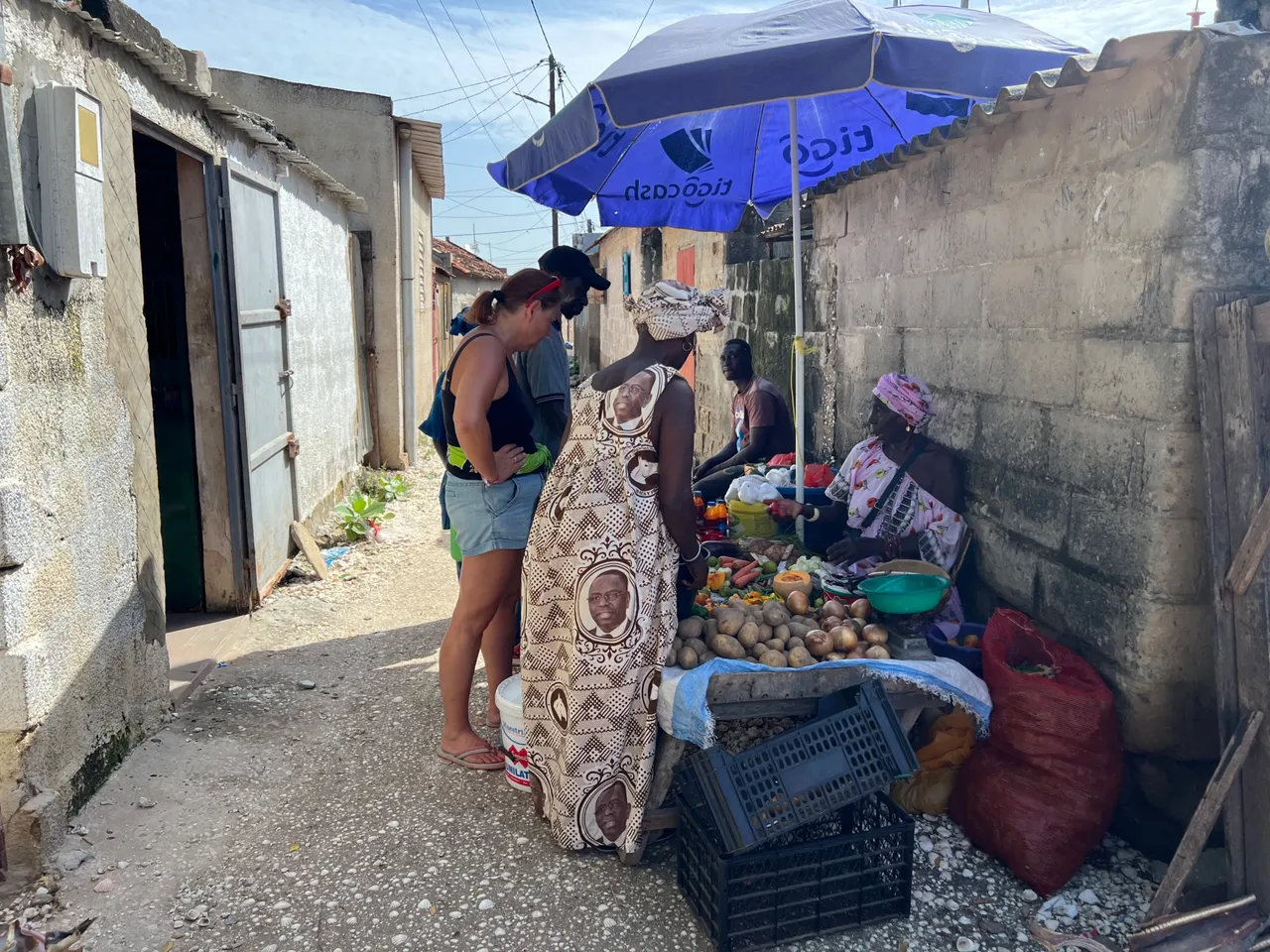
The market, though small, was vibrant. Vendors sold freshly caught fish, piles of vegetables, and handcrafted items, many of which were adorned with—you guessed it—shells. The people here have found endless ways to incorporate shells into their daily lives, from art and crafts to the very structure of their homes. The market was lively but not overwhelming. The pace was slower, friendlier. People stopped to chat, haggle, and laugh, and everywhere I went, I was greeted with smiles and waves.
Walking through Fadiouth, you can see how the island’s culture is shaped by both the land and the sea. It’s a place where nature and human ingenuity have come together to create something entirely unique. From the houses to the church, mosque, and marketplace, everything here feels connected to the past while being very much alive in the present.
The Street Market: A Feast for the Senses
One of the highlights of my visit to Fadiouth was its street market — a cool street of activity where the heart of the village comes alive. As I wandered deeper into the island, I found myself drawn to the sound of lively chatter and the scent of fresh fish mingling with the salty sea breeze. The market, though modest in size, was bursting with color, life, and the rich aromas of local produce. There where maybe only 20 to 30 sellers but all look well.
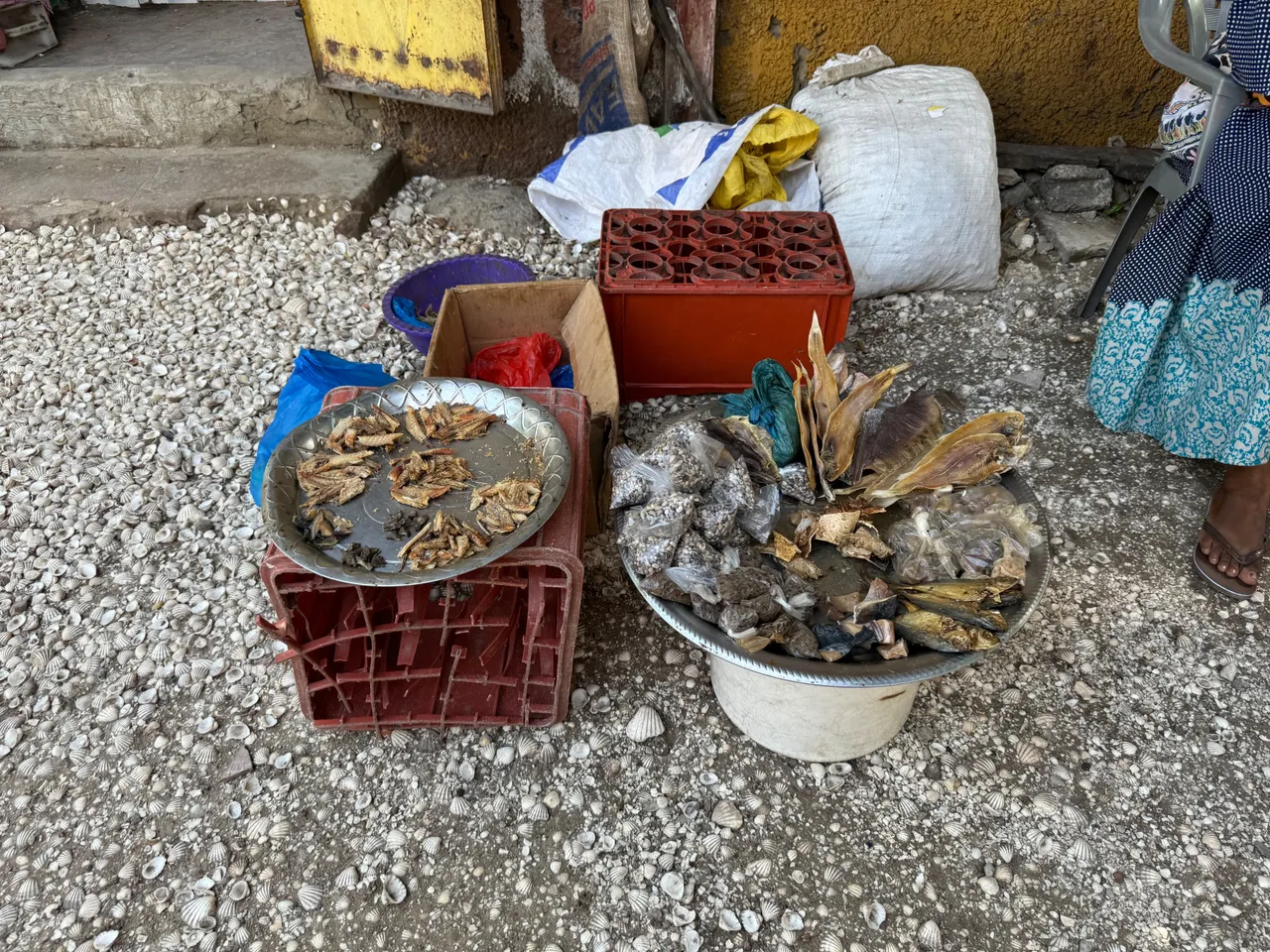
The fish market was the first thing I encountered. Piles of freshly caught fish, their scales shimmering in the sunlight, were laid out on makeshift stalls, with local fishermen proudly displaying their day’s haul. You could see everything from gleaming mackerel to large grouper, their sharp eyes staring up as if they had just been pulled from the waters minutes before.
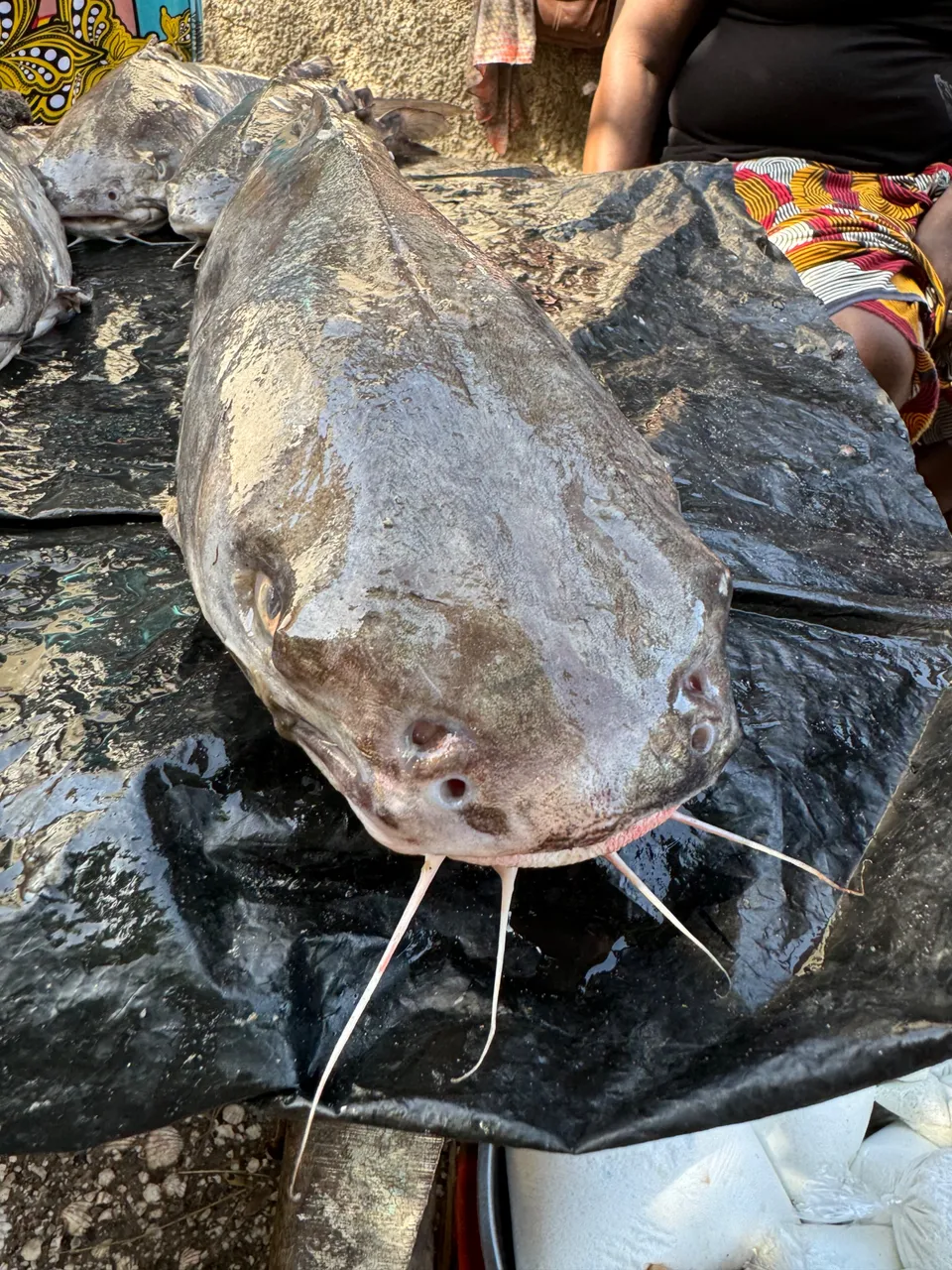
Women, many with bright headscarves, expertly gutted and cleaned the fish with swift, practiced hands, while traders haggled cheerfully with customers over prices. The sound of knives hitting cutting boards and the splash of water as fish were washed added to the symphony of the marketplace.
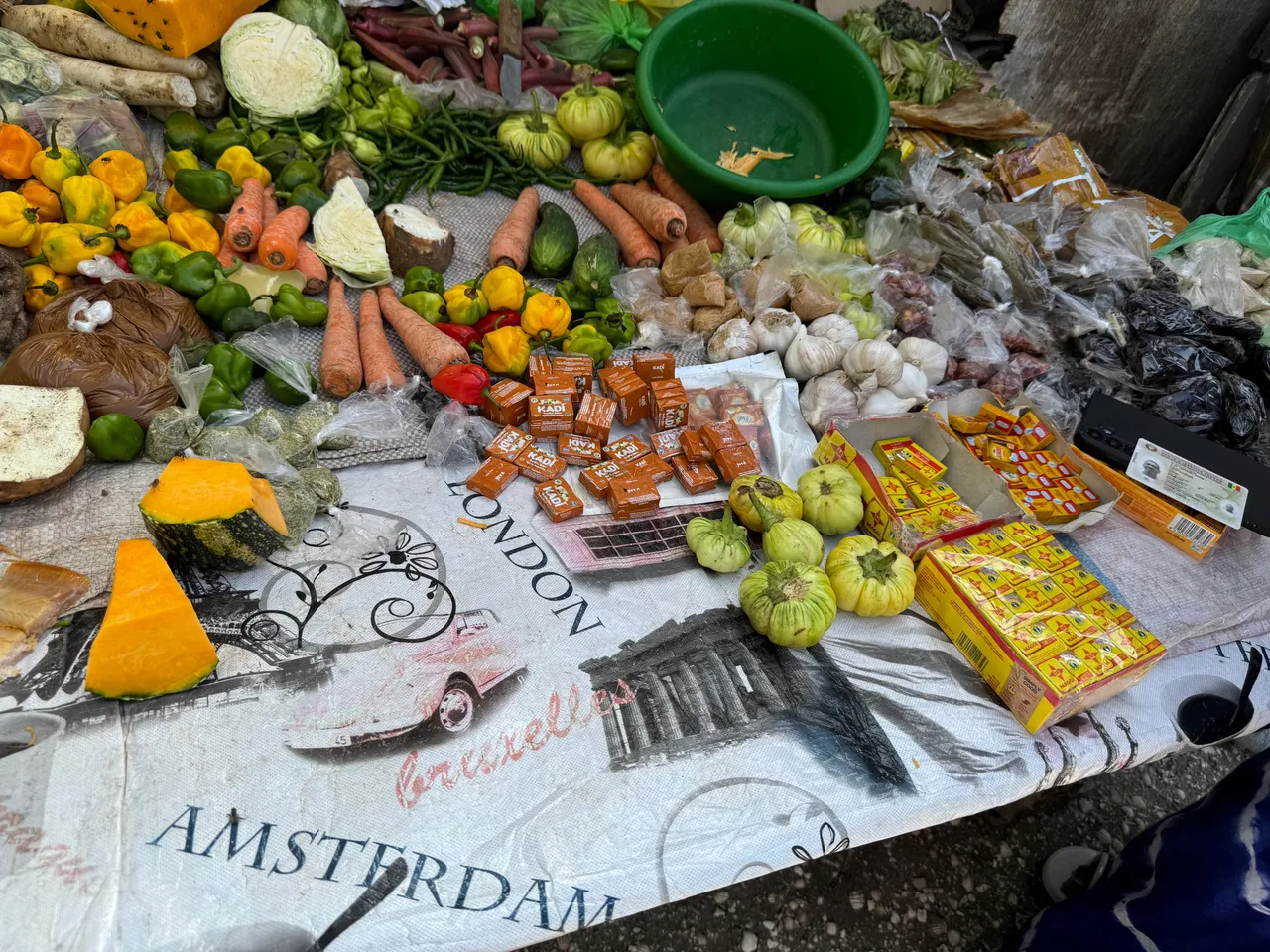
Moving further into the market, the colors seemed to explode. Piles of fruits and vegetables—plump tomatoes, ripe mangos, bananas, onions, and fiery red peppers—were stacked high on tables, their vibrant hues creating a feast for the eyes. The produce here is fresh, picked locally from farms across the delta or grown in small village gardens. The bananas were particularly tempting, their sweet scent filling the air, while the oranges looked like they had soaked up the very essence of the sun.
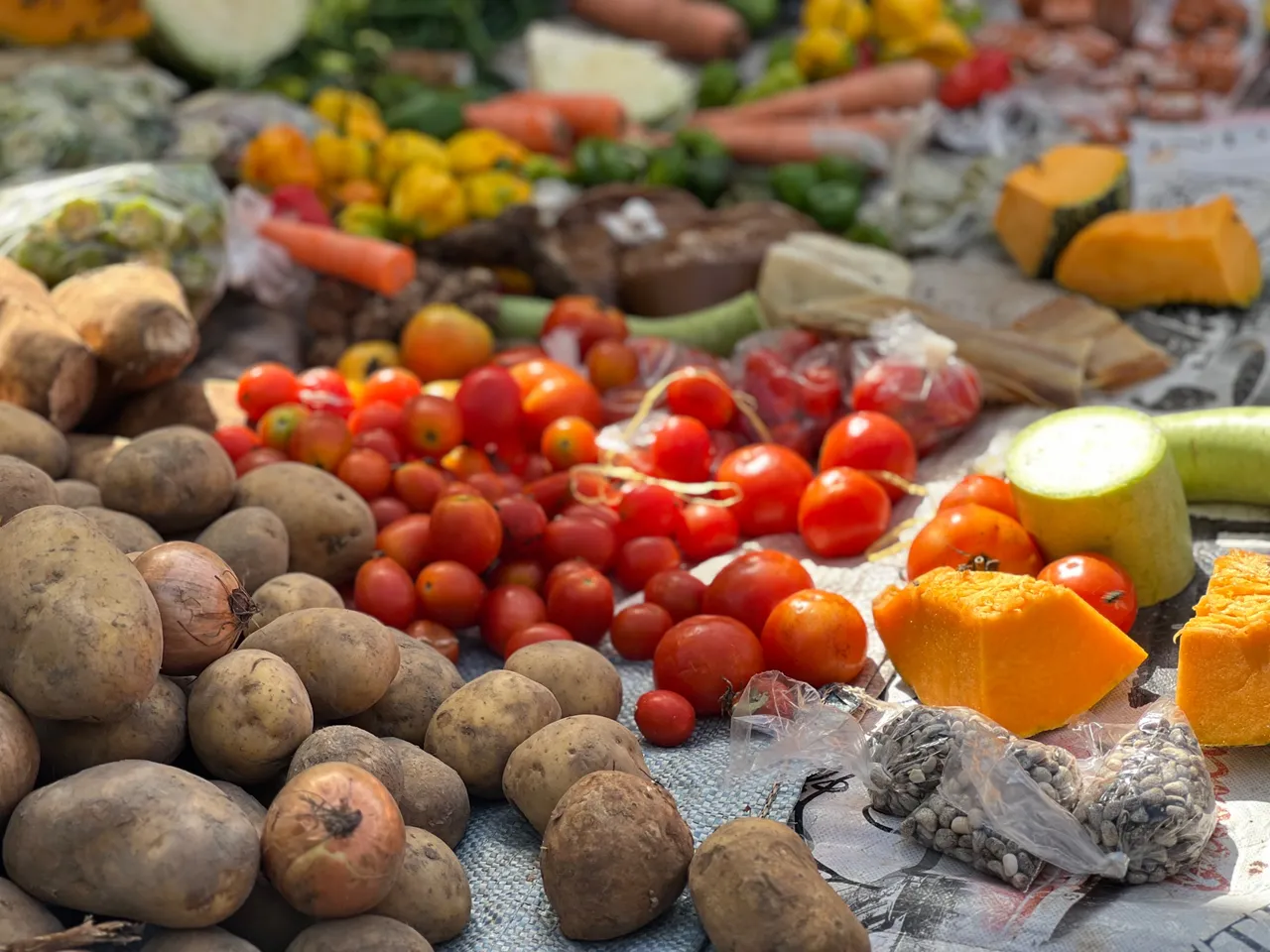
I stopped at one stall selling an array of cassava, sweet potatoes, and millet, staple crops that are the backbone of Senegalese cuisine. The women tending the stalls were friendly and quick to offer a smile, encouraging me to try a taste or feel the firmness of the fruits. The prices were always negotiable, and the haggling was done with humor and respect, a back-and-forth that ended with both the buyer and seller feeling like they’d struck a fair deal.
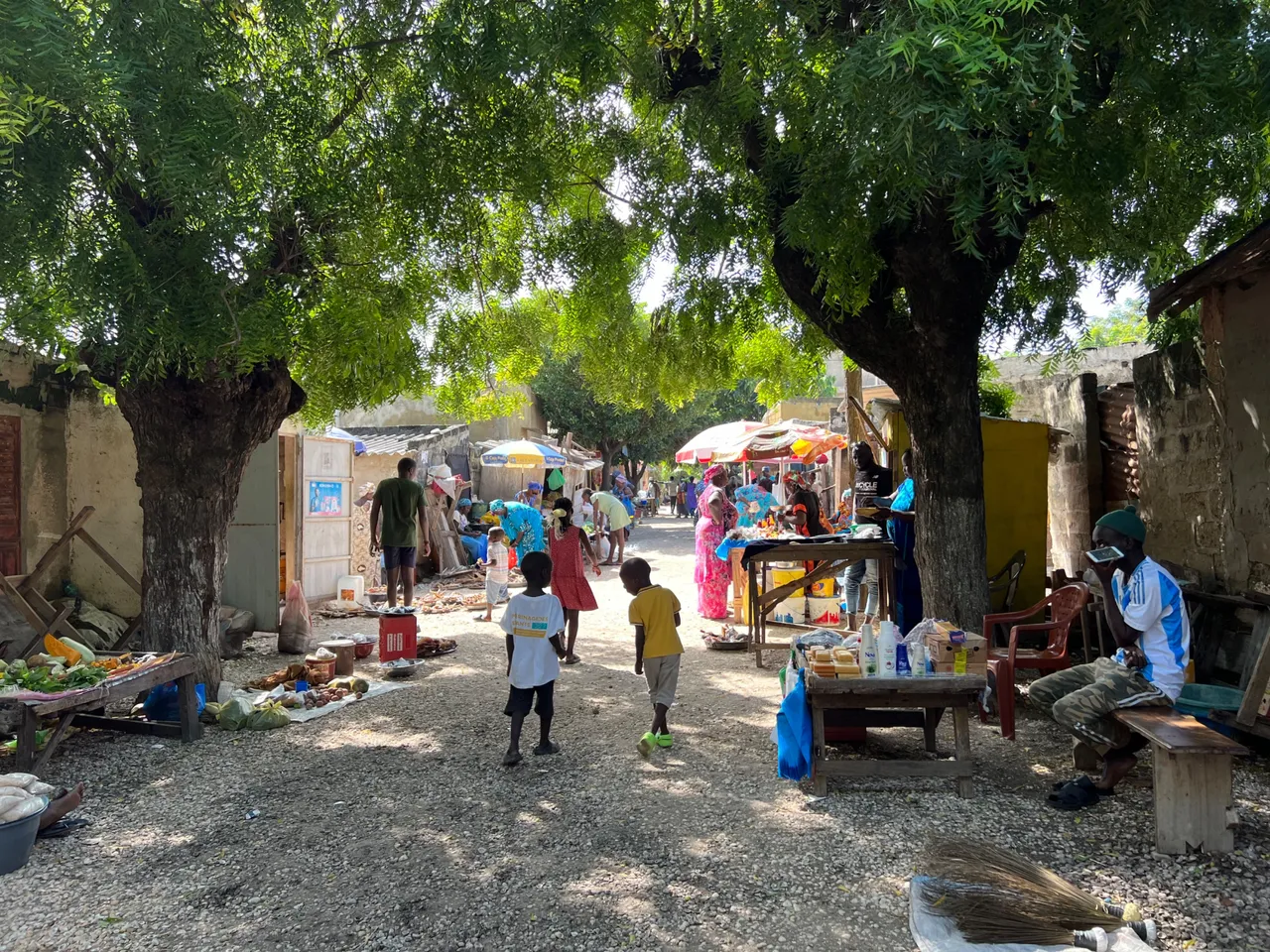
What I loved most about the market was how it felt like the heartbeat of Fadiouth. Everyone seemed to know each other, and the market wasn’t just a place to buy food—it was a social space where villagers caught up on news, exchanged stories, and shared laughs. As I made my way through the stalls, I could feel the sense of community that binds the island together. Even as a visitor, I felt welcomed into this daily ritual of commerce, where the simple act of buying and selling fish and vegetables becomes an expression of connection and life.
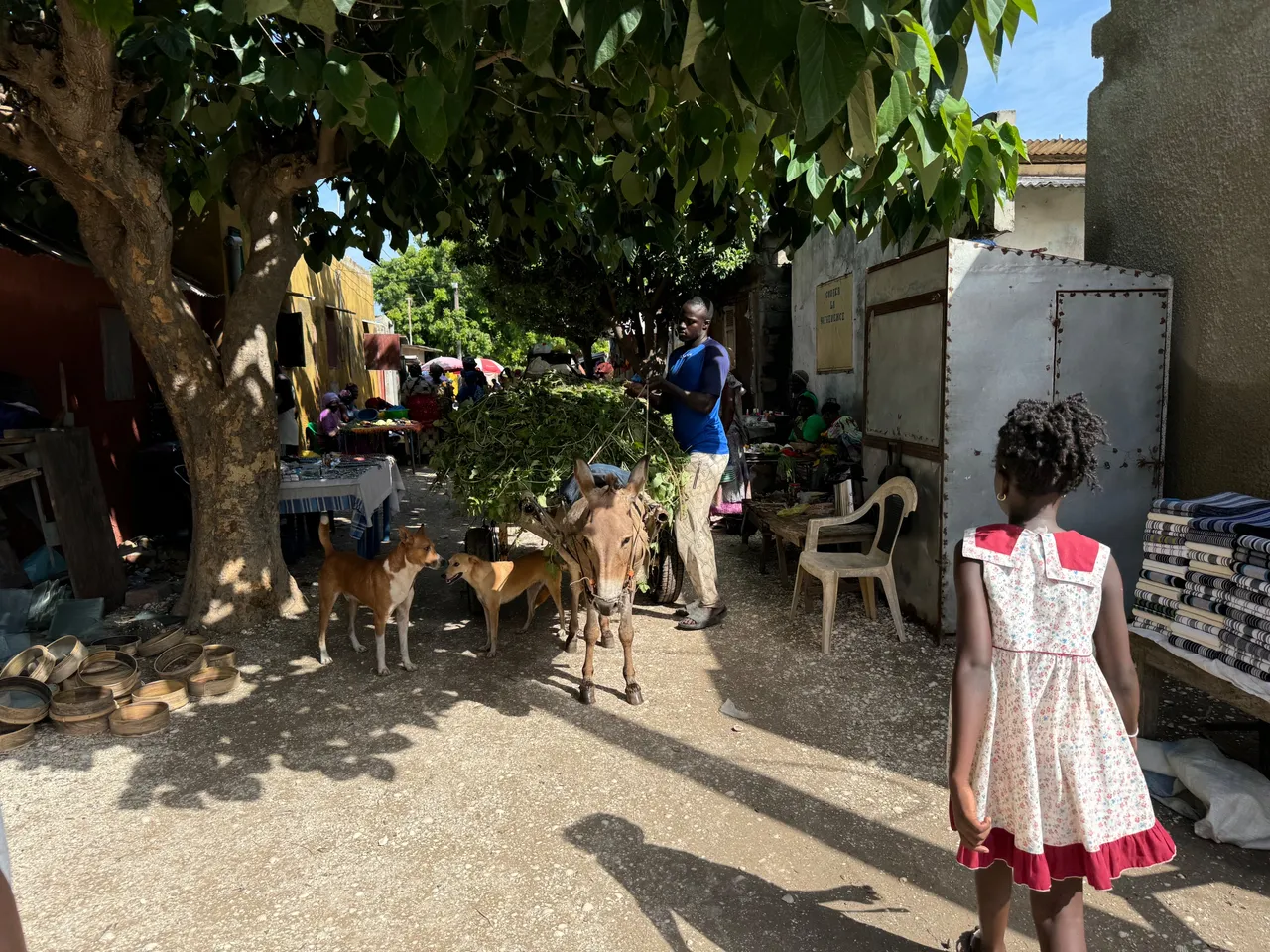
The market was an absolute sensory overload—in the best way possible. The bright colors, the sound of voices mixing with the slap of fish on the table, the smell of fresh seafood and ripe fruit—it was a living, breathing experience that made me feel like I was at the center of the village’s soul.
Heading Back by Boat: A Peaceful Farewell
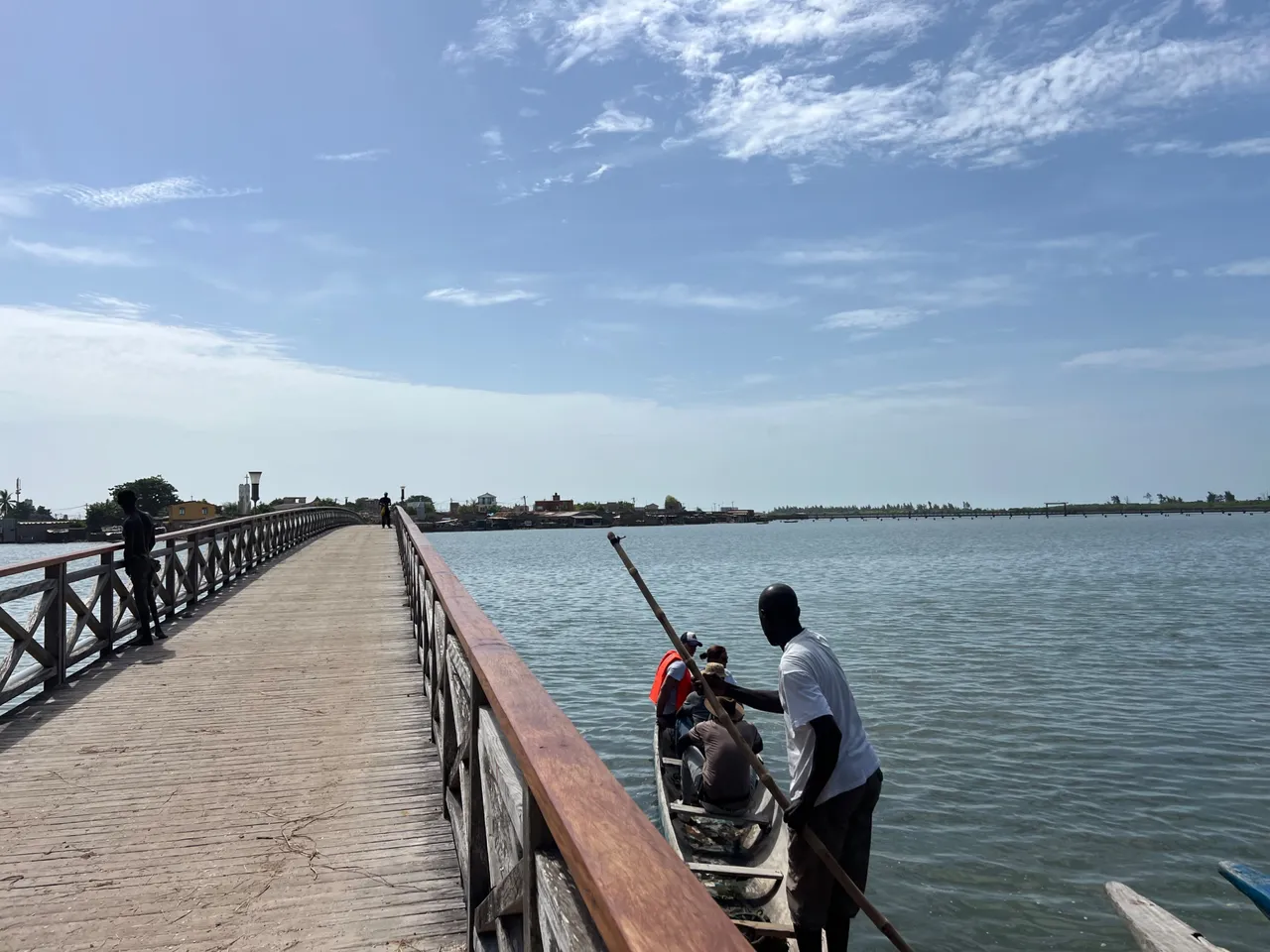
As the day began to wind down and the sun dipped lower in the sky, casting the island in a soft, golden light, it was time to leave. But instead of walking back across the bridge, I decided to take a boat—a traditional pirogue, painted in bright colors, that rocked gently as I climbed aboard. The boatman, with a quiet smile, expertly guided us through the calm waters, past the mangroves, giving me a final look at the island from the water. From this vantage point, Fadiouth looked even more like a floating island of shells, its streets and homes blending seamlessly into the sea and sky.
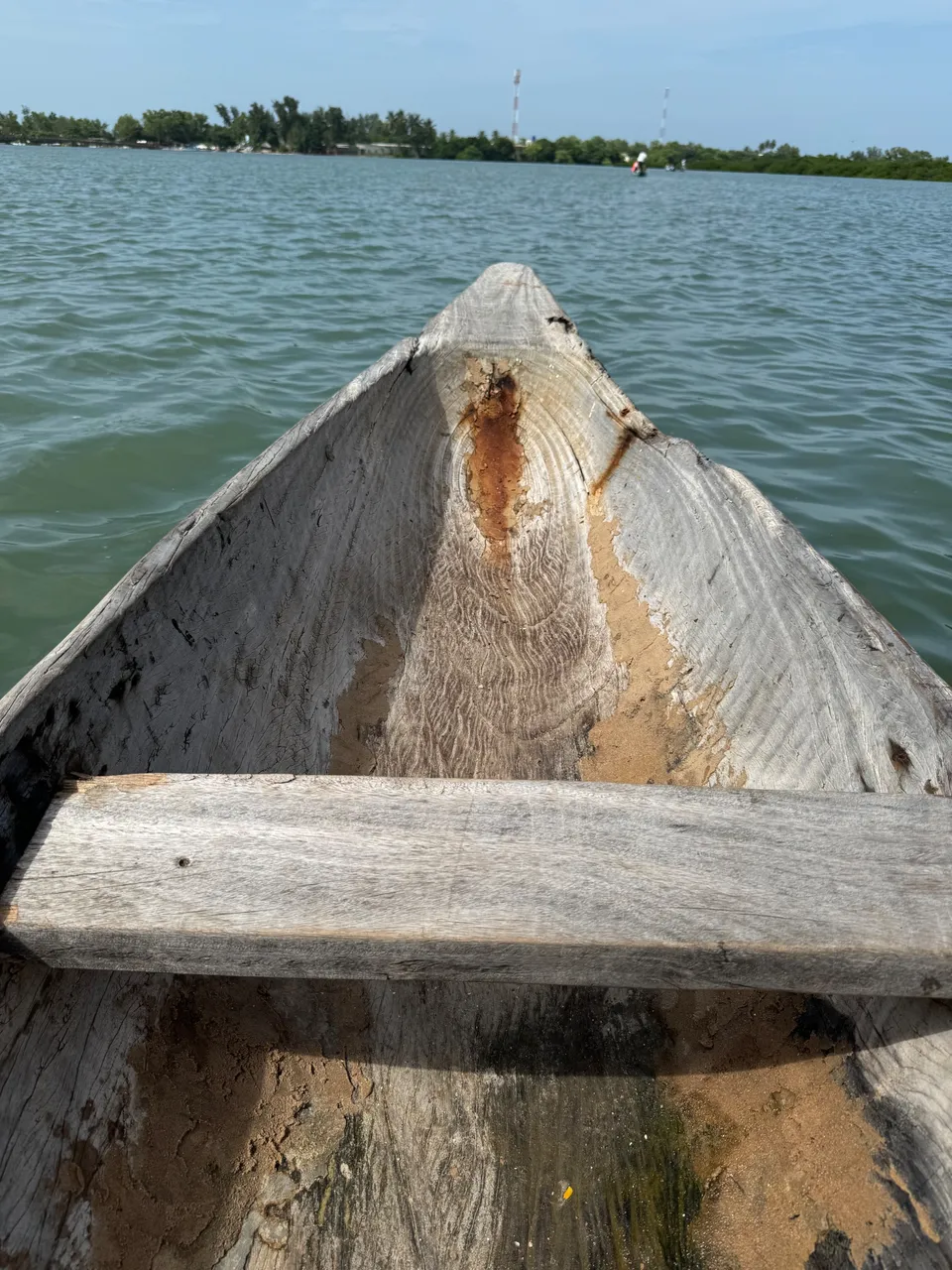
The ride was peaceful, almost meditative. The water lapped softly against the sides of the boat, and the air was filled with the scent of the sea. The view of the island slowly receded, and I couldn’t help but feel a deep connection to this place. It’s not just the shells or the bridge or the remarkable history that makes Fadiouth special—it’s the spirit of the people who live here, the harmony they’ve cultivated, and the quiet beauty of a life lived at a slower pace.
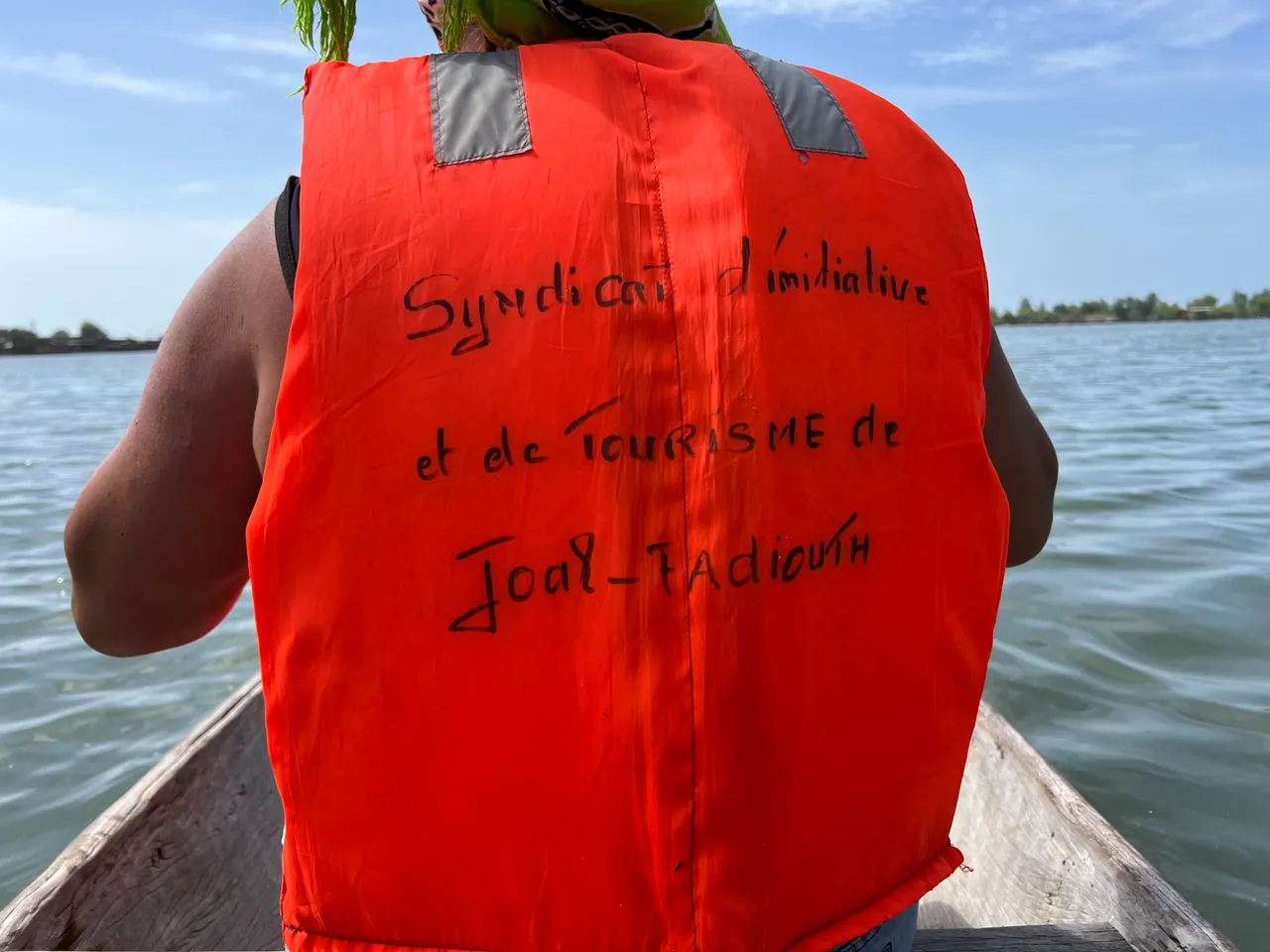
Looking back

As we reached the shore, I stepped off the boat and took one last look back at Fadiouth storage area. Because of any issues with fire or other problem, the islanders store there food outside the main island at this little huts at the nearby mangrove area.
Conclusion
This little island, built from the sea and shaped by its people, had left a mark on me that I wouldn’t soon forget. Fadiouth may be small, but it’s a place with a big heart, and as I walked away, I knew it had found a lasting place in mine.
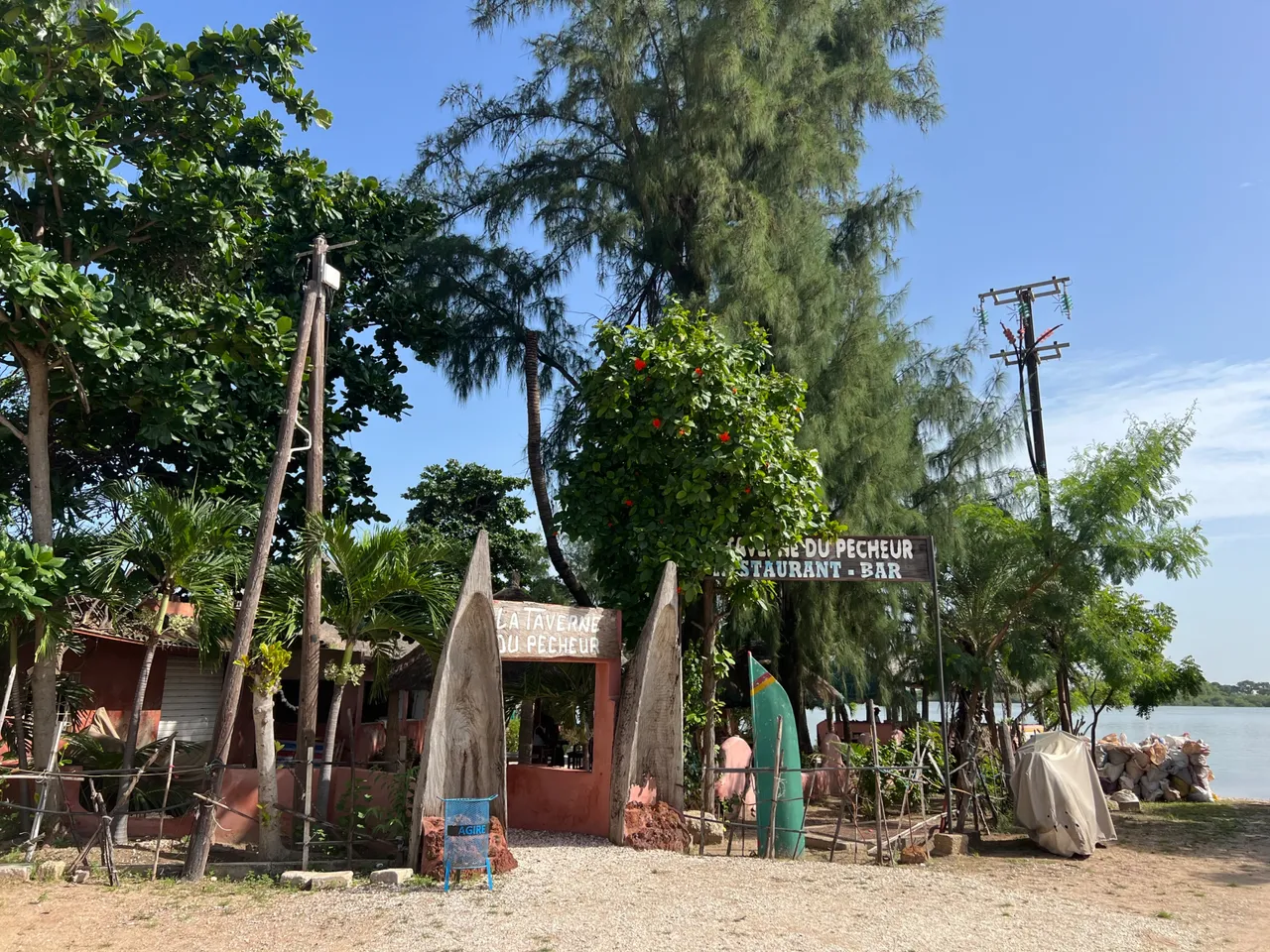
Next visit: A huge Baobab tree
So, stay tuned for the next travel report from Senegal
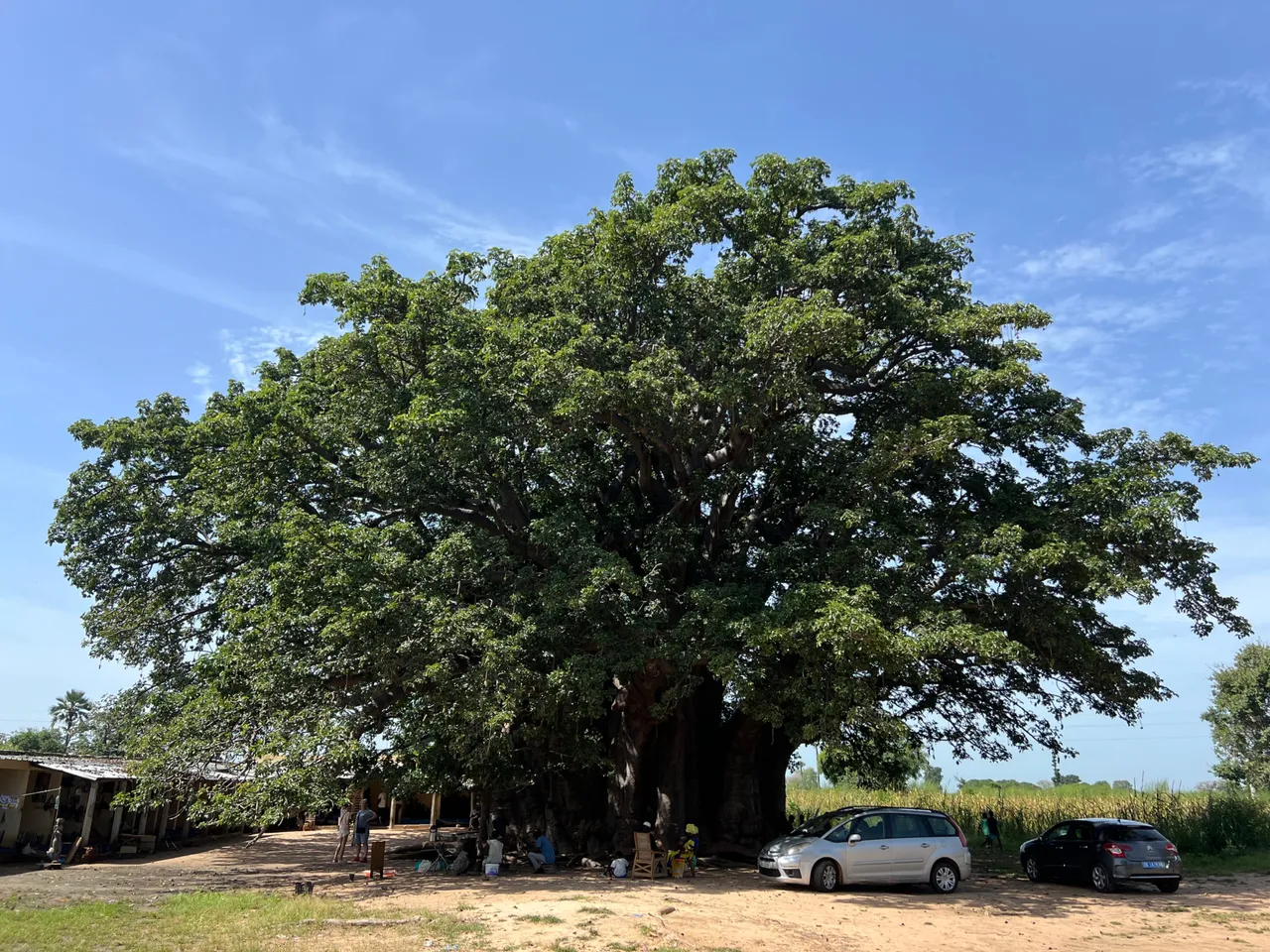
Read my other post from this country
Senegal posts by @detlev
1. Travel to Senegal
2. A “nearly” lonely beach walk in Senegal
3. Diving in Dakar
4. Fadiouth the shell-covered island
5. Baobab trees and their facts / wip
6. Joal the different harbor / wip
Have a great day everybody
and let us travel the world again
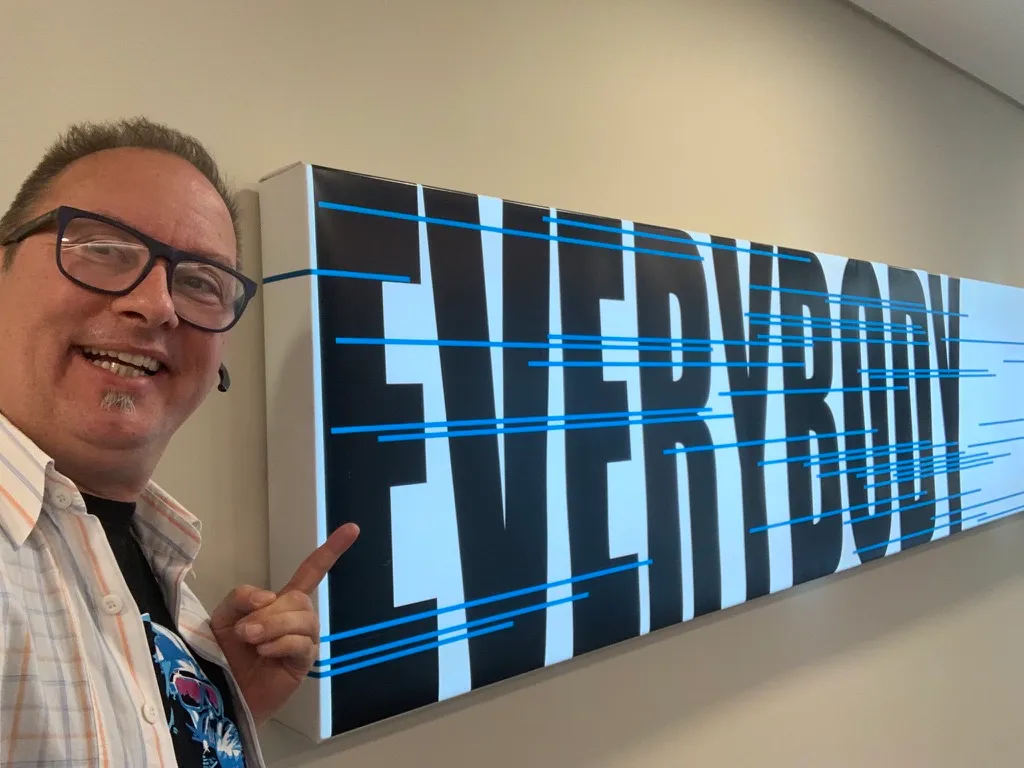
pic by @detlev
Enjoy the #BeerSaturday
have 3 pics and a story
around beer - and go!

@Detlev loves HIVE